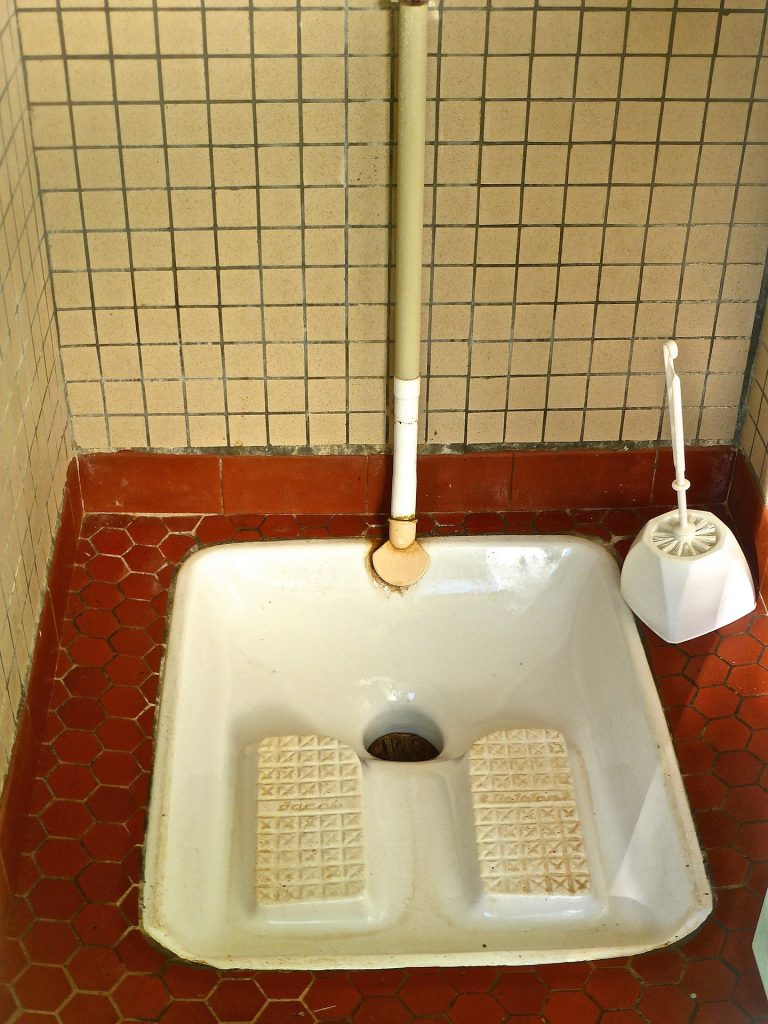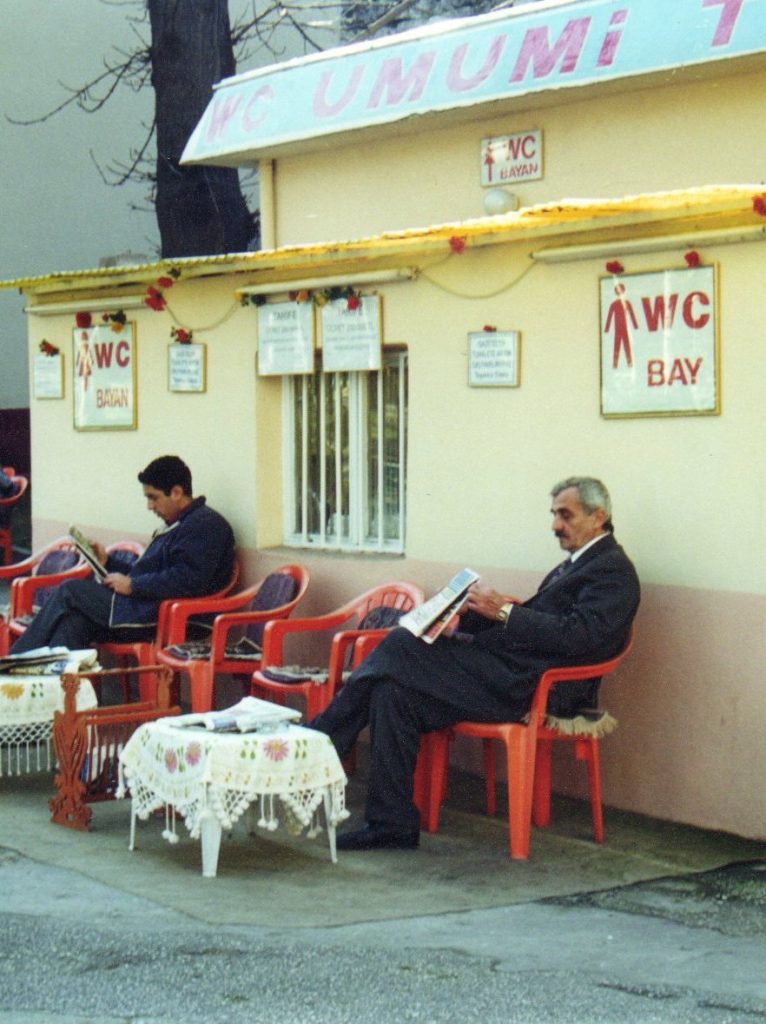Back in 1990 when I first visited Turkey, toilets, whether squat or what we think of as ‘normal’ but the Turks call Ala Franga, were a constant topic of discussion among tourists visiting the country. There were plenty around, in mosques, restaurants, bus stations and even in free standing facilities in parks, but the question was, would they be something you’d actually want to use? At that time they were rarely supplied with toilet paper. After paying the entry fee you were usually given a few pieces of thin tissue, which I think were meant for drying your hands. Everyone was expected to use the worn out looking jug or hose next to the toilet for personal bidet style ablutions. Often the toilet flush didn’t work and so the jug has a dual purpose.

I’m pretty tough and when needs must, nothing stops me. In 1990 I used outdoor drop toilets in the Black Sea region, whose contents were regularly cleared out to be used as fertiliser on the nearby fields I could see in the gaps in the slat door. After having to hold my breath to use a stinking facility in an old bus station in Ağrı in 2001, I discovered there wasn’t even any water connected to fill the jug. I walked out and refused to pay for the service, despite a small boy harassing me for money even after I climbed back on my bus. In 2004 I had to use a cigarette lighter to find my way into basement toilets of a restaurant in Kahta. Despite the lack of electricity they were surprisingly clean, but that I found out later was because the restaurant had only opened three days previously. Give it time my Turkish friends said.
Yet had I gone to Giresun in 2000, I’d have discovered one of Turkey’s best facilities, at least according to the man who made it possible. In an interview with English language newspaper the Turkish Daily News, Dursun Taşdemir explained what he’d done to make the toilets where he worked as a janitor a standout destination. He said “I’ve put in loads of pigeons, 10 canaries, a whole variety of plants and trees as well as four big fish tanks”.
I didn’t make it to Giresun to visit the castle where Dursun had his toilets, but I was lucky enough to visit Gulhane Park, the former gardens used by the ladies of the harem, in Istanbul in 2001. In keeping with the palace theme, the ladies toilets were tastefully furnished with lush maiden hair ferns, chirping canaries, cosy chairs and a full-length chaise lounge. An ironing board and iron stood ready in one annexe while a double tiered tea pot simmered quietly in another. I can’t remember what the actual toilets looked like, but it was a memorable experience, for all the right reasons. Sadly they’ve been replaced with something much more mundane.

I was working in Istanbul at a private English college at the time, and in order to get my teaching permit, had to go to a large public hospital for a raft of tests. One of them was for diabetes, which involved giving a urine sample. In Australia you were given a screw top jar and a paper bag so you could discretely leave your sample with the receptionist. Not so here. I was handed a white, plastic disposable cup with a number written on it in pen, with no lid, and sent to the public lavatories.
The room was full of short rotund village women wearing headscarves. As one they turned to look ferociously at me, the yabancı, the foreigner with blue eyes, wearing Western clothes. I nervously clutched my cup while keeping an eye on proceedings because getting into a cubicle was a case of survival of the fittest. As I jockeyed to get close to one of the doors I could see they were traditional Turkish squat toilets. While I waited my turn I pondered the practicalities of peeing into a plastic cup in the squat position, while holding my handbag and coat above a floor I knew was going to be wet.
I wondered how the Turkish women coped with their voluminous baggy pants, long thermal underwear, droopy cardigans and floor length coats. Even though they had friends to hold their handbags and bit and pieces, we all shared the same problem as far as aiming accurately was concerned. If you squatted in the normal position you aimed downwards but wouldn’t be able to see the cup. If you shifted so you could see the cup, your flow would be horizontal and hard to capture. By this stage I was in a cubicle, and began to put the theory into practice. Settling into a comfortable position, I took some tissues from my pocket and did a dry run of the procedure, so to speak, while wondering how much was necessary for a sample. Not having anyone to ask I just went ahead regardless. Within a few moments I was sitting there with the cup half full, wondering where to put it while I adjusted my clothes. There were no shelves or ledges so the only solution was to place a tissue on a dirty bit of broken tile, and carefully balance the cup on top.
Finally done, I then had to walk out, cup in hand, past our Turkish fixer and dozens of people standing about for no apparent reason. Minutes ticked by before I could steel myself enough to leave the cover of the lavatory, head down the corridor and carefully place my cup on the waiting trolley. There were already dozens of cups on it, sporting assorted volumes and disparate hues, some of them quite startling. I felt really embarrassed but luckily no one paid me any particular attention. When my husband returned with his cup, he told me about a man in the toilets who’d missed the mark, unfortunately. Kim had watched in disbelief as the guy used a tissue to carefully wipe away the overflow, erasing most of the number too. Clearly no one had thought to use waterproof pens.
Turkish toilet facilities have come a long way since my early experiences, but you still can’t be sure what awaits you behind the cubicle door.
To read more of Lisa’s Turkish adventures, be sure to visit her blog.









